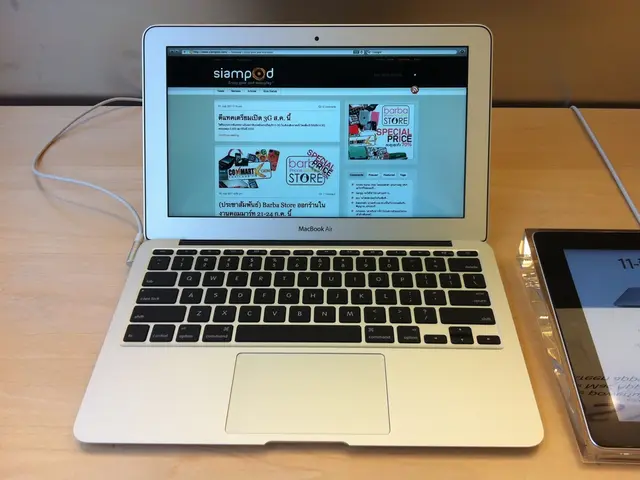Senior Care Transformations: Addressing Shifts in Residential Populations and Employment Requirements in the Elderly Care Sector
The Centers for Medicare & Medicaid Services have proposed a rule to change nurse staffing requirements at long-term care facilities, highlighting the growing importance of technology in the senior care sector. As the demand for senior care continues to increase, senior care organisations are leveraging technology strategically to attract, retain, and engage employees, while simultaneously meeting the evolving needs of current and prospective residents.
Attracting Employees through Technology
Technology can significantly improve the recruitment process by providing a streamlined and positive experience for potential candidates. Digital interview portals and AI-driven candidate screening tools can match candidate skills and preferences with job roles more effectively, speeding up hiring and improving the quality of hires.
Retaining Employees with Technology
Retaining employees is crucial in the senior care sector, and technology plays a vital role in this aspect. Personalised onboarding and career development, flexible scheduling tools, comprehensive benefits technology, and ongoing education and training are some of the ways technology is being used to boost employee retention rates. Digital onboarding platforms that connect new hires with organisational values and resources improve retention rates, while self-scheduling technologies allow employees to balance work and life demands. Comprehensive benefits technology platforms manage personalised benefits across different employee life stages, supporting well-being and reducing healthcare costs.
Engaging Employees and Residents through Technology
Communication and collaboration tools, AI-enabled passive monitoring and safety tools, and resident-centered digital platforms are being used to engage employees and residents. Video and audio devices enhance communication within the care team and between residents, families, and staff, fostering connection and responsiveness to resident needs. AI passive sensors help prevent resident injuries by alerting caregivers promptly, improving resident safety and staff efficiency. Resident engagement platforms like "It's Never 2 Late" (iN2L) personalise resident engagement by tailoring activities and interests, improving resident satisfaction and creating a meaningful workplace for staff who facilitate these activities.
By embracing human-centered technology solutions, senior care organisations can effectively attract and retain a skilled workforce while simultaneously improving the quality of life and care for residents. This dual focus on employees and residents, supported by advanced technology, is essential to meet the increasing demands in senior care.
Automation can be used in senior care to assign single sign-on employee accounts and provide accessible documentation. Mary Lynn Spalding, president and CEO of Christian Care Communities, offers same-day pay for employees and a rewards system for high-performing employees. Aaron Fields, CIO of the Rochester, N.Y.-based St. Ann's Community, implemented a same-day pay solution with a payroll provider.
Upgrading infrastructure or high-speed internet access can have a big impact on senior care organisations. Fewer than 1 in 5 nursing facilities can meet the required number of hours for RNs and nurses' aides, underscoring the need for technology to streamline operations and improve efficiency.
Senior care leaders recently discussed strategies for meeting resident expectations, attracting and retaining employees, and the role of technology during the 2023 LeadingAge Annual Meeting and EXPO, taking place Nov. 5-8 in Chicago. Follow updates on the event at @HealthTechMag and #LeadingAge23.
Employees in senior care want to feel valued, and technology can facilitate this. Peter Corless, executive vice president of enterprise development at OnShift, emphasises the importance of celebrating staff and recognition in senior care. Friendly Senior Living saw improvements after upgrading its network and boosting bandwidth.
Steven VanderVelde, director of senior living partnership at ProviNET Solutions, suggests using automation and AI to augment workforces in senior care. Staffing shortages in senior care organisations are a major concern, and technology plays a key role in meeting the demands of current and prospective residents while engaging the workforce.
References:
1. 2. 3. 4.
- By leveraging digital interview portals and AI-driven candidate screening tools, senior care organizations can improve the hiring process by matching candidate skills and preferences more effectively.
- Streamlined recruitment processes, facilitated by technology, can speed up hiring and increase the quality of hires.
- Personalized onboarding and career development programs, made possible through technology, can boost employee retention rates.
- Digital onboarding platforms that connect new hires with organizational values and resources can improve retention rates significantly.
- Self-scheduling technologies enable employees to balance work and life demands, hence improving retention rates.
- Comprehensive benefits technology platforms manage personalized benefits across different employee life stages, supporting well-being and reducing healthcare costs.
- Communication and collaboration tools in senior care enhance communication within the care team and between residents, families, and staff.
- AI passive sensors help prevent resident injuries by alerting caregivers promptly, improving resident safety and staff efficiency.
- Resident engagement platforms like "It's Never 2 Late" (iN2L) personalize resident engagement by tailoring activities and interests.
- Technology can be used to create a meaningful workplace for staff who facilitate resident activities.
- By embracing human-centered technology solutions, senior care organizations can effectively attract and retain a skilled workforce.
- Same-day pay for employees and a rewards system for high-performing employees can boost employee morale and retention.
- Upgrading infrastructure or high-speed internet access in senior care organizations can have a significant impact on efficiency and operations.
- Fewer nursing facilities meet the required number of hours for RNs and nurse's aides, highlighting the need for technology to streamline operations.
- Strategies for meeting resident expectations, attracting and retaining employees, and the role of technology were discussed at the 2023 LeadingAge Annual Meeting and EXPO.
- Celebrating staff and recognition in senior care is important, and technology can facilitate this process.
- The importance of staffing shortages in senior care organizations and the role of technology in meeting demands was also discussed.
- Employees in senior care want to feel valued, and technology can facilitate this sentiment.
- Automation and AI can be used to augment workforces in senior care.
- Health and wellness, including fitness and exercise, mental health, and sexual health, are integral parts of senior care.
- Family health plays a crucial role in senior care, and technology can help manage familial relationships and concerns.
- Skin care, therapies, and treatments are important aspects of senior care, and technology can improve delivery and variety.
- Nutrition and weight management are significant factors in senior care, and technology can aid meal planning and dietary needs.
- CBD and innovation in senior care can offer alternative treatments for various health conditions.
- Finance and entrepreneurship in senior care can provide opportunities for growth and investment.
- Interior design, cooking, and leadership in senior care can enhance the overall living environment.
- Diversity and inclusion, ethnic cuisines, and global cooking styles are essential in senior care to cater to diverse residents.
- Dining, outdoor living, personal finance, real estate, saving, debt management, gadgets, smartphones, technology, artificial intelligence, and sustainable living are all relevant topics in senior care and daily life.








